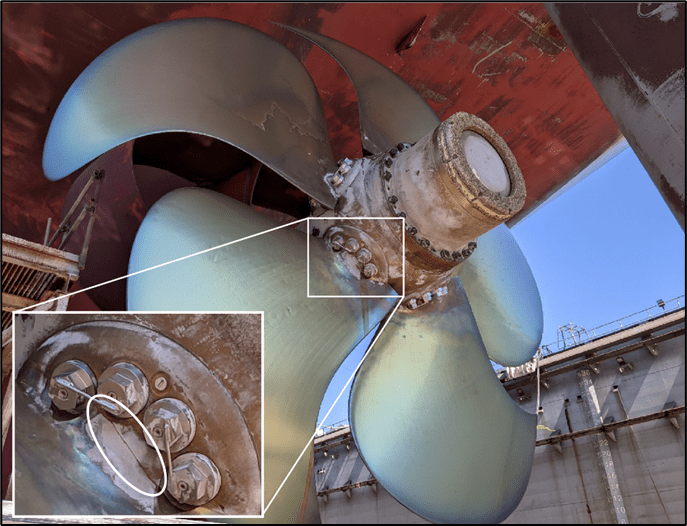Inside the White House Push to Reopen Baltimore’s Harbor
By Skylar Woodhouse (Bloomberg) — Around 4 a.m. on March 26, the White House Situation Room notified Chief of Staff Jeff Zients that the unthinkable had happened: a container ship struck...


Editorial credit: Sheila Fitzgerald / Shutterstock.com
A crack in a propeller blade of a Matson containership led to a loss of hyrdraulic oil and propulsion while transiting the Pacific Ocean, the National Transportation Safety Board (NTSB) said Tuesday.
The incident, which occurred on August 11, 2022, resulted in a loss of up to 1,632 gallons of hydraulic oil and an estimated $3 million in damage.
The probable cause has been traced back to a cracked blade on the vessel’s controllable pitch propeller (CPP) system, which investigators discovered did not meet manufacturer design specifications.
The U.S.-flagged Maunalei, a 681-foot-long containership, is owned and operated by Matson Navigation Company, Inc., a subsidiary of Matson, Inc. The vessel was en route from Anchorage, Alaska, to Portland, Oregon, for drydock repairs when the crew intentionally shut down the main engine due to problems with the propeller system. This resulted in a loss of propulsion approximately 245 miles from the entrance to the Columbia River near Portland.


Upon drydocking, a third-party company found cracks and fractures at the base of the no. 4 blade of the 5-bladed propeller, where the blade was bolted to the propeller’s hub. The cracks, which began at the blade’s bolt hole counterbore radius, were consistent with progressive cracking due to high-cycle fatigue. The company also found that the no. 4 blade did not meet manufacturer design specifications for engineering, material, and chemical composition. The bolt hole counterbore radius was 0.2 millimeters smaller than the required 0.8 millimeters, and the materials did not meet specifications for impact toughness, tensile and yield strength, or percent elongation. Additionally, the silicon content exceeded the specified minimum.
The NTSB investigators concluded that the crack and fracture on the no. 4 blade were likely isolated occurrences, as the blade did not meet specifications, and a manufacturer’s analysis of other five-bladed controllable pitch propeller systems on similar vessels did not identify any other instances of cracks.
In response to the incident, the blade manufacturer has revised the internal radius requirement, enlarging it for all seven-bolt hole counterbores, in a bid to improve fatigue fracture resistance.
Join the gCaptain Club for curated content, insider opinions, and vibrant community discussions.


Join the 106,850 members that receive our newsletter.
Have a news tip? Let us know.
Access exclusive insights, engage in vibrant discussions, and gain perspectives from our CEO.
Sign Up




Maritime and offshore news trusted by our 106,850 members delivered daily straight to your inbox.



Essential news coupled with the finest maritime content sourced from across the globe.
Sign Up